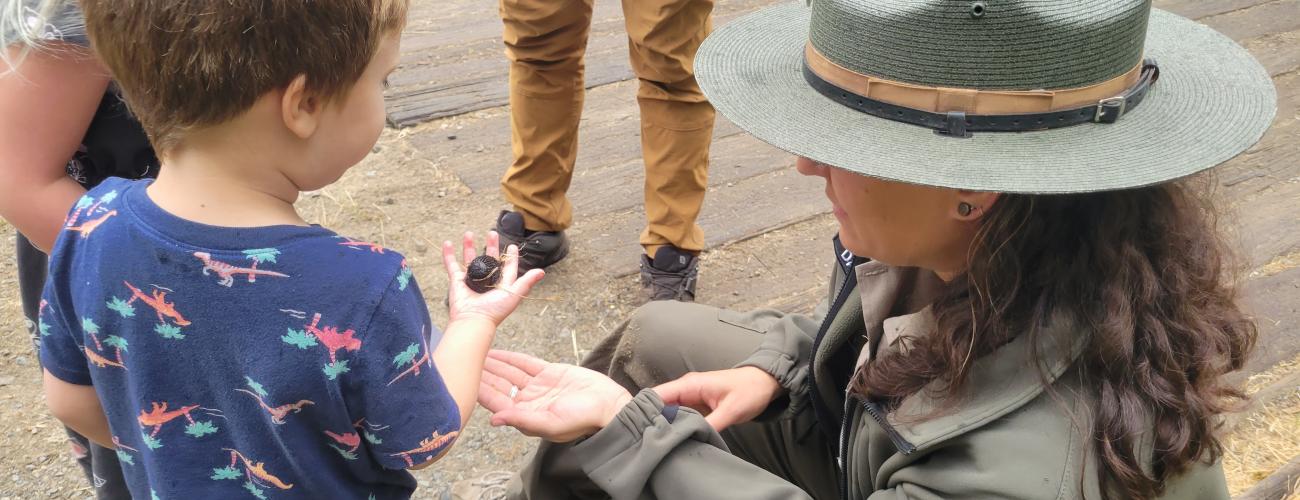Lake Sammamish State Park History
Lake Sammamish State Park is one of Washington’s most popular state parks, attracting visitors from the large cities and towns nearby with its attractive beaches, picnic areas, athletic fields and open space.
Tongues of the great Pleistocene glaciers that excavated the passageways of Puget Sound also dug the nearly seven-mile-long basin of Lake Sammamish. Today’s park encompasses the floodplains of Issaquah Creek and Tibbetts Creek at the lake’s inlet.
Indigenous Lands, Treaties and Farmers
Lake Sammamish State Park lies within the traditional territories of Coast Salish Indigenous people whose present-day descendants include members of the Muckleshoot Indian Tribe, Snoqualmie Indian Tribe, and Confederated Tribes and Bands of the Yakama Nation. For thousands of years, Lake Sammamish and surrounding lands have provided habitat for a diverse community of life that forms the basis of their cultures.
Local tribes ceded ownership of the area to the US federal government under duress in the Treaty of Point Elliot in 1855, keeping rights to harvest resources in their usual and accustomed places.
After government land surveys were completed in 1864, much of the land in today’s Lake Sammamish State Park passed into private ownership as a Homestead Entry patent issued to Thomas S. Swane on March 5, 1875. Other parts of today’s park were purchased from the US government as Cash Entry patents, and land in the northeast section of the park was granted by the federal government to the State of Washington as part of the statehood land grant to be held in trust “for all the people,” approved in 1890.
Completion of the Lake Washington Ship Canal in 1916 lowered the level of Lake Washington and affected Lake Sammamish by increasing currents in tributary waters. Landowners noticed that Squak Valley (the name eventually evolved into Issaquah, as it is known today) lands became less prone to flooding and better supported cultivation after the changes.
The private land owners developed their lands for farming potatoes, turnips and rutabagas. Hop farming, begun in the Puyallup Valley by Ezra Meeker in 1865, spread to the Squak Valley by 1868 when the Wold Hop Farm was located on land in today’s Lake Sammamish State Park. Hop farms in western Washington got a major boost in the 1880’s, when a hop blight in Europe opened a lucrative export market for the crop. An article in The New York Times in 1891 noted that “There is no state in the Union where hop growing is carried on with more success than in Washington. Cool nights and the long sunny days, and certainty of early summer rains, make the cost light, the yield large, the quality choice and the crop certain.” Harvesting the hops was labor intensive; many of the pickers were Indigenous people from the local area. Unfortunately, infestations of a hop aphid virtually eliminated hop farming west of the Cascades after 1892.
John and Addie Anderson acquired the original Thomas S. Swane homestead in the late 1870s, running a successful dairy farm on 210 acres for many years before passing the property on to their heirs. At one point their farm was responsible for about a third of the milk produced in the Issaquah Valley.
Another dairy farm developed by Albert Giese in 1898 was located near today’s boat launch and group camp. The farm was purchased on contract by Hans Jensen in the 1930s.
Becoming a State Park
Members of the East Side Federated Clubs began advocating for a state park at Lake Sammamish in 1945. The first 40 acres of the park were purchased by the Washington State Parks and Recreation Commission (WSPRC) in 1950 from John and Addie Anderson’s descendants. The remaining 170 acres of the former Anderson farm were purchased the following year. The park officially opened to the public on July 27, 1952.
Dairy farmer Hans Jensen, who had emigrated from Denmark to Issaquah in 1904, welcomed people to swim and picnic at the beach on his property. In his will, he stated: “I have worked hard and was unable to play to the extent that I would like to see other boys play, so I give …all of [my] real estate … to be added to the Lake Sammamish State Park.” On his death in 1957, 67 acres were bequeathed to the WSPRC.
In 1990, 78 acres of state trust lands adjoining the Jensen property bequest were added to Lake Sammamish State Park as a Trust Land Transfer funded by the Washington State Legislature.
Sharing the histories of Washington’s state parks is an ongoing project. Learn more here.

